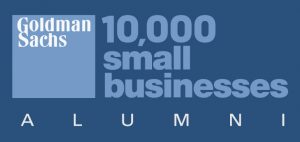I’ve been working on a number of different websites and marketing/development initiatives for clients lately in the non-profit cultural space and there’s been one, consistent thread in my work. How do we get people to TAKE ACTION, how do we CREATE VALUE and how do we GAIN KNOWLEDGE?
In each case as I’ve been exploring these questions I keep coming back to the need to have contact engagement, metrics, data and action elements. Which keeps leading me back to the need for organizations to think strategically about CRM (Customer Relationship Management) systems.
What am I talking about? If you are part of a non-profit .org – particularly in the development area but really anywhere in the administration or board capacity you know that cultivating donors is a huge part of the task. There are many different layers of expertise and thought about what that means but fundamentally it all boils down to one thing – is your organization important enough to a potential donor that they are willing to support you?
What does important mean? It means – does your organization bring the donor joy. Does it speak to their interest. Do you do work that they value for its impact? Do you bring them into contact with other, like minded people. Does your organization expand their experience of life?
That’s a tall order – but we can break it down into smaller steps. In considering how to engage with a new individual as a donor, subscriber or contact organizations need to ask themselves “Who are the people we seek to attract and we know are attracted to us – and what ACTION do those people want to take with us?” Think about it – what are the active verbs that apply. They might be “give”, or “volunteer”, or “connect”. These ACTIONS are the meat on the bone of engagement – and in considering what action you are going to ask of your potential customer you need to consider the lifetime value of that engagement, not just the short-term conversion.
Here’s a common pathway: “Become a member”. The ACTION is “become” – so why should someone join your group? We hope it is because of the reasons above – joy, interest, connection. We often articulate these as “benefits” – free admission, store discounts, special event tickets. Do these things really entice people to hand over their credit card? In some cases – yes – it’s easy to do the math on joining if your $50 membership will pay itself back in two or more visits for instance. That’s simple math.
Too many organizations stop at that point. The conversion – membership purchase – has been made. From here on out engagement with that member is automated – weekly emails, quarterly mailings, annual fund solicitation. What if there could be more – what if we could take advantage of this open door and find ways to create new, long term value with that new member and gain knowledge from them on an ongoing basis?
A good CRM system can be a key element in making this happen – but too many organizations I find are overwhelmed by the choices, the technical complexity, and the power of these systems to really take advantage of them. The big guns in CRMs are Blackbaud, SalesForce, Zoho, and others. Smaller providers in NeonCRM, WildApricot, and Classy. An open-source, community supported CRM that I’ve been working with recently is CivicCRM.
How can an organization choose between these? I would suggest stepping back from the long list of features that each of these provide and asking some fundamental questions about your organization first. What do you want from a new connection? What are you able to give back? And what is the level of investment and attention you are willing to provide over the long term. Most importantly – can your organization actually use the system to elevate your engagement over time?
Asking some fundamental questions like these may help you to understand which system is going to work best for you. If a CRM can create a better environment for engagement and exchange over time, can create opportunities for action and value generation, then you need to consider the implementation carefully. A good CRM system should not just automate and mine your connections – ideally it should allow you to bring much greater personal attention and value exchange to them.
I’m a big fan of Colleen Dilenschneider and her work with data around non-profit management, marketing and engagement. By paying attention to actual data she gleans insight into what really makes people tick. This article talks about the oversize role that relationships play in engagement with cultural organizations – boiled down she shows that the best thing about cultural organizations is “friends and family” – the phenomenon that we tend to enjoy those spaces and experience more significantly with those we care about and are connected with.
Right there is a clue about the role that a well-organized and managed CRM could tell your organization. Have you paid attention to the possibilities for creating more value in your contact list through associations and paying attention to customer behavior? Most of these systems allow you to record the relationships between your donors, and to expand the connections and information about their family and friends. Some of these systems – like Classy – are able to leverage these relationships in significant ways through peer-to-peer fundraising tools, which have significantly greater rates of return than traditional campaigns.
In my work I’m trying to keep these issues front and center. In developing a web presence today I’m asking these questions about action, value and knowledge. It’s a fascinating time to be working on these questions as the insights and tools we have evolve – but I’m constantly seeing the forest for the trees. Human relationships matter more than data. If data can help us build and expand our relationships, then we’re doing it right.
Thoughts?

Join the discussion One Comment